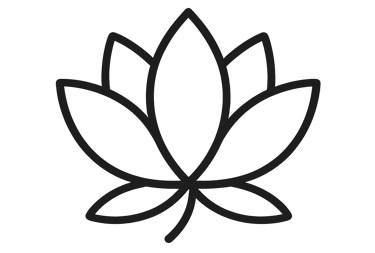We’re so glad you’re here. Our website is still in the final stages of polishing. Appointment booking isn’t open yet-but it will be soon.
Stay tuned!
Your Breath, Your Superpower: How Conscious Breathing Regulates, Restores, and Transforms Your Health
Explore the science of conscious breathing and its role in stress relief, hormone balance, immune support, and whole-person healing through integrative care.
BRAIN HEALTH
Natalie Nedeau, APRN, FNP-C
5 min read


What if you had access to a powerful healing tool—one that could calm your nerves, steady your heartbeat, lower stress hormones, and strengthen your immune system? And what if it was available to you anytime, anywhere, completely free? That tool is your breath. More than just an automatic function, your breath is a built-in superpower. With just a few slow, intentional breaths, you can create real shifts in your mind and body. This article explores the science behind breathing and how to harness it for health, clarity, and resilience.
Noticing the Shift: How Conscious Breathing Reflects—and Regulates—Your Inner State
Have you ever caught yourself holding your breath in traffic? Or breathing fast and shallow before a difficult conversation? Our breath mirrors our state of being—tight and rushed when we're anxious, slow and steady when we’re at ease. The shift often happens without us even realizing it. But here’s the empowering part: once you do notice it, you can shift it.
By slowing your breath and breathing deeply from your diaphragm, you activate the parasympathetic nervous system—the part of your body wired for calm, healing, and restoration (Harvard Health Publishing, 2021). That’s the beauty of breath awareness: it transforms an automatic stress response into a conscious healing choice.
How Your Superpower Works: Breath and the Body
1. Cardiovascular Health
Slow, controlled breathing enhances heart rate variability (HRV)—a key marker of stress resilience—and supports blood pressure regulation (Laborde, Mosley, & Thayer, 2017). Just six deep breaths a minute can help your body respond more calmly to challenges, reducing cardiovascular strain.
2. Hormone & Stress Regulation
When you're stressed, your brain activates a communication loop with your adrenal glands—called the HPA axis—which triggers the release of cortisol, your primary stress hormone. While this response is helpful short-term, chronic activation can disrupt sleep, mood, energy, and hormone balance.
Slow, intentional breathing helps calm this loop by signaling safety to your nervous system. Over time, it can support healthier cortisol rhythms, reduce stress, improve mood, and contribute to overall emotional balance (Ma et al., 2017).
3. Immune Resilience
Your breath can actually support your immune system. Studies show slow breathing and mindfulness-based practices reduce inflammatory cytokines like IL-6 and TNF-alpha, boosting your ability to fend off illness and inflammation (Zaccaro et al., 2018; Black & Slavich, 2016).
4. Brain & Mood Function
Your breath has a direct line to your brain. Slow, steady breathing helps calm the emotional centers of the brain—especially the amygdala, which plays a key role in detecting threats and triggering stress responses (Noble & Hochman, 2019). At the same time, breathwork increases levels of GABA, a calming brain chemical that promotes relaxation and emotional balance (Streeter et al., 2012).
This makes intentional breathing a powerful support for mental clarity, mood regulation, and focus.
When your breath slows down, your thoughts do too.
Simple Breath Rituals to Activate Your Inner Superpower
Breathwork doesn’t have to be complicated—but it does benefit from awareness. In modern life, many of us breathe shallowly from our upper chest without even noticing. Learning to breathe with intention means consciously slowing your breath, gently expanding your belly as you inhale, and allowing your diaphragm to fully engage. This simple shift supports deeper oxygen exchange, activates your calming nervous system, and helps restore balance throughout your body.
Once you’ve built this foundation of intentional, diaphragmatic breathing, simple techniques like these can further deepen your practice:
1. The 4-7-8 Breath
Originally introduced by Dr. Andrew Weil, this rhythmic breath pattern helps quickly reset the nervous system.
How to do it: Inhale through your nose for 4 seconds, hold for 7, and exhale through your mouth for 8. Repeat for 4 cycles.
Why it works: The extended exhale stimulates your vagus nerve, which helps slow your heart and calms your brain (Weil, n.d.).
Watch Dr. Weil’s demo: 4-7-8 Breathing Video
2. Box Breathing
Used by Navy SEALs and first responders, this technique keeps you steady in the storm.
How to do it: Inhale for 4 seconds, hold for 4, exhale for 4, hold for 4. Repeat.
Why it works: The consistent rhythm enhances oxygenation and reduces anxiety, keeping your focus sharp (Nestor, 2020).
Conclusion: Your Superpower Is Just a Breath Away
You don’t need fancy tools, perfect timing, or a quiet room to tap into your superpower. All you need is your breath. Whether you’re facing a stressful moment or simply starting your day with intention, slow, conscious breathing gives your body what it needs most—safety, balance, and space to heal.
So the next time life feels overwhelming, pause. Breathe. And remember: Your breath isn’t just automatic—it’s intentional, restorative, and deeply powerful. Breathe easy, live well.
Take the Next Step with Libellula
Sometimes the smallest shifts—like a single breath—can begin to change everything. If you’re curious how breathwork fits into a more personalized approach to health, we’d love to support you. Whether you’re facing stress, burnout, chronic symptoms, or simply seeking balance—Libellula is here.
Pause, breathe, and take the next step—Schedule your consultation
References
Black, D. S., & Slavich, G. M. (2016). Mindfulness meditation and the immune system: A systematic review of randomized controlled trials. Annals of the New York Academy of Sciences, 1373(1), 13–24. https://doi.org/10.1111/nyas.12998
Harvard Health Publishing. (2021, July 6). Relaxation techniques: Breath control helps quell errant stress response. https://www.health.harvard.edu/mind-and-mood/relaxation-techniques-breath-control-helps-quell-errant-stress-response
Laborde, S., Mosley, E., & Thayer, J. F. (2017). Heart rate variability and cardiac vagal tone in psychophysiological research—recommendations for experiment planning, data analysis, and data reporting. Frontiers in Psychology, 8, 213. https://doi.org/10.3389/fpsyg.2017.00213
Ma, X., Yue, Z.-Q., Gong, Z.-Q., Zhang, H., Duan, N.-Y., Shi, Y.-T., Wei, G.-X., & Li, Y.-F. (2017). The effect of diaphragmatic breathing on attention, negative affect and stress in healthy adults. Frontiers in Psychology, 8, 874. https://doi.org/10.3389/fpsyg.2017.00874
Nestor, J. (2020). Breath: The new science of a lost art. Riverhead Books.
Noble, D. J., & Hochman, S. (2019). Hypothesis: Pulmonary afferent activity patterns during slow, deep breathing contribute to the neural induction of physiological relaxation. Frontiers in Physiology, 10, 1176. https://doi.org/10.3389/fphys.2019.01176
Streeter, C. C., Gerbarg, P. L., Saper, R. B., Ciraulo, D. A., & Brown, R. P. (2012). Effects of yoga on the autonomic nervous system, gamma-aminobutyric-acid, and allostasis in epilepsy, depression, and post-traumatic stress disorder. Medical Hypotheses, 78(5), 571–579. https://doi.org/10.1016/j.mehy.2012.01.021
Weil, A. (n.d.). Breathing: Three exercises. DrWeil.com. https://www.drweil.com/videos-features/videos/breathing-exercises-4-7-8-breath/
Zaccaro, A., Piarulli, A., Laurino, M., Garbella, E., Menicucci, D., Neri, B., & Gemignani, A. (2018). How breath-control can change your life: A systematic review on psycho-physiological correlates of slow breathing. Frontiers in Human Neuroscience, 12, 353. https://doi.org/10.3389/fnhum.2018.00353


Libellula Integrative Care, LLC © 2025.
Patient Resources
Explore
l
l
